The Story of Wheat’s Genetic Diversity and How the Pan-Genome Bridges Structural Variations with Habitat and Breeding
Published in Genetics & Genomics, Plant Science, and Agricultural & Food Science

Wheat, along with maize and rice, is one of the three major food crops on which humanity relies for survival, and serves as the foundation of human agricultural civilization. Common wheat originated in the Middle East (Fertile Crescent) about 8,000 years ago and spread around the world with human migration, becoming the primary food grain across all five continents. Wheat is an allohexaploid, consisting of three functionally similar sub-genomes (A, B, D) that can undergo mutual replacement between chromosomes. This genetic flexibility provides the wheat genome with excellent characteristics of elasticity and toughness, enabling it to better tolerate frequent structural changes like gene loss/duplication, inversion, and translocation. The genome assembly of the model variety “Chinese Spring” being finished in 2018 propelled scientists’ knowledge of wheat to a new level. Vigorous research involving resequencing of a large number of varieties and germplasm resources has enhanced our understanding of the origin, evolution, spread, and breeding improvement of wheat. However, unmapped reads of resequencing data to the “Chinese Spring” reference genome suggest that no single variety could represent the full genomic diversity of wheat. To fully capture this diversity, high-quality de novo assemblies of a batch of representative varieties are essential, thus constructing a comprehensive pangenome.
In 2020, Prof. Curtis Pozniak and his colleagues led the assembly of the genomes of 16 global wheat varieties (10+ project), with 10 assembled to the chromosome level. This study marked the official entrance of wheat research into the “pan-genome era” and revealed the large number of structural variations present in the wheat genome. This work was mainly based on western wheat resources and was limited by the technology of the time, mostly consisting of short-read based assemblies. China is the world’s largest wheat producer and consumer and also a major wheat breeding country. In the past 70 years, the yield of wheat varieties in China has increased by eight-fold. More than 5,000 varieties have been bred, of which about 3,500 have been nationally approved, with relatively systematic variety pedigree records. Analyzing the genomic changes during the breeding process of Chinese wheat varieties offers an exemplary case of how genomics can be integrated into breeding, enhancing the existing collection of publicly assembled the integration of genomics and breeding and is a valuable addition to the publicly available wheat germplasm. This was the impetus for launching our ambitious work in 2020 by Professor Xueyong Zhang at the Chinese Academy of Agricultural Sciences (CAAS).
Although Professor Varshney has been working heavily on legume genomics until 2022, his concept – genomics-assisted breeding for crop improvement, impressed Professor Zhang to start collaboration. They successfully completed the wheat Advanced Backcross–Nested Association plus MAGIC Inter Crossed (AB-NAMIC) Breeding project (https://www.sciencedirect.com/science/article/pii/S2590346223000470). As a result, Professor Zhang started his collaboration with Professor Varshney on the wheat pangenome project. Both visited each other’s laboratory and involved each other’s group in the collaborative analysis of the wheat pan-genome project. For instance, Professor Zhang hosted Professor Varshney at his laboratory during a distinguished visit of Prof Varshney to the Chinese Academy of Agricultural Sciences and the Chinese Academy of Sciences in March 2023. Both groups started the analysis and interpretation of the data collaboratively. Furthermore, Professor Zhang travelled to Perth in September 2023 to finalize the project. In parallel, Prof Varshney started a collaboration with Prof Girish Dwivedi of Harry Perkins Institute of Medical Research (The University of Western Australia) Australia, towards connecting agriculture with human health. This provided an opportunity for Prof Varshney to associate Professor Dwivedi to contribute to the wheat pangenome project. In summary, the insights and contributions from Professor Varshney and his team (Dr Vanika Garg and Anu Chitikineni), as well as Professor Rudi Apples and Prof Dwivedi from Australia, were instrumental in enriching the analysis process, data interpretation and manuscript writing.
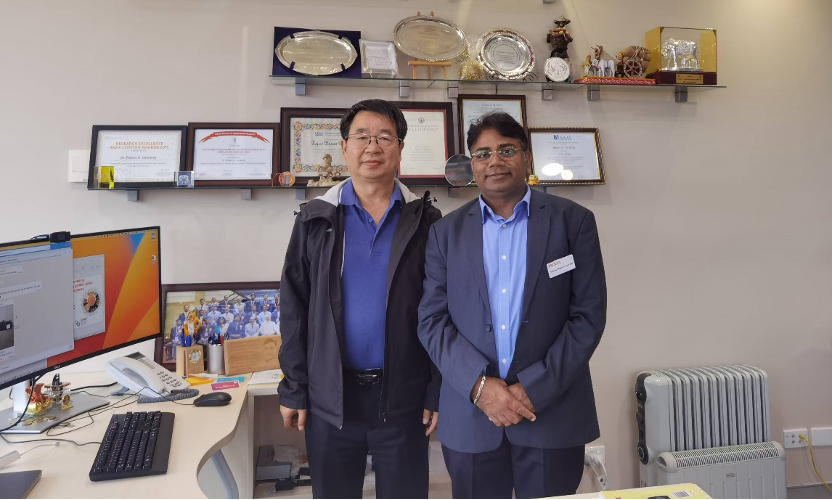
Professor Xueyong Zhang and Professor Rajeev Varshney in the office of Prof Varshney at Centre for Crop and Food Innovation, Murdoch University (MU), Australia in September 2023. This visit helped to finalize the manuscript on wheat pangenome, and also initiate other collaborations.
In terms of key outputs from the study, to our surprise, the diversity of these 17 Chinese wheat varieties is higher than that of varieties bred in other countries over the past 30 years. Corporatization is an international trend in crop breeding development, such as maize, rice, and rapeseed breeding in China, which has largely achieved corporatization. In contrast, commercial wheat breeding still progressed slowly as farmers can multiply and save seeds themselves. This reality provides a foundational opportunity for maintaining the high genetic diversity of wheat varieties and keeping their robustness. This situation actually offers a reference for governments to adjust and manage the breeding of wheat and other crops in the future.
This study represents the first wheat pan-genome analysis based on long-read sequencing, pushing wheat genomics research to a new stage. These high-quality assemblies allowed us to accurately analyze the full diversity between varieties, especially the widespread structural variations. This also enabled us to comprehensively review the complex evolution and breeding selection processes of key trait-related genes, such as Vrn1, from new perspectives. Two fundamental biological questions are highlighted in this study:
- Long regions across centromeres are crucial in wheat cultivar differentiation. Historically, we have noted that the rule of chromosome pairing exchange for almost all eukaryotic genes is that “the exchange rate drops sharply from both ends towards the centromere”. The centromere-surrounding region is gene-sparse and a cold spot for exchange, but it is challenging to be explained. During his postdoctoral period in 1996, Professor Zhang proposed that “Peri-centromeric regions” serve as the core areas of sub-genome differentiation in wheat’s close relative, Thinopyrum ponticum (Genome, 1996, https://cdnsciencepub.com/doi/10.1139/g96-133). His group then published following research articles in 2008 and 2013, proving that differentiation of the three sub-genomes A, B, and D in wheat follows a similar pattern. This view has also been confirmed in crops such as maize, rapeseed, and cotton. In 2020, Professor Zhang’s team depicted the two main haplotypes on the 3B chromosome of wheat (Molecular Plant, 2020); in 2022, the team from China Agricultural University (CAU) proposed the ancestral haplotype typing of wheat peri-centromeric regions (cent-AHG), demonstrating the path of wheat’s spread to East Asia with 3B cent-AHG (Nature Communications, 2022); this has become a common interest in our cooperative research. In this new article, we discovered numerous structural variations in the regions across centromeres on chromosomes such as 1A, 2A, 6A, 7A, 3B, 5B, and 6B in wheat varieties, which significantly hinder chromosome recombination and gene exchange. Therefore, the long regions across centromeres are not only the center of sub-genome differentiation, but also the core area in cultivar differentiation.
- Adjustment and adaptation of foreign genomic fragments. The introduction of beneficial genes from wild relatives through hybridization is of great importance in wheat improvement. Following the principle of “When in Rome, do as the Romans do”, which is a basic characteristic of human migration and adaptation, we found that genomic evolution also adheres to this principle. The newly assembled pan-genome includes six chromosomes containing 1RS/1BL, and we were surprised to find significant differences in the terminal length of the newly settled 1RS chromosome. This observation, which has never been unreported yet, actually led us to question the “reliability” of the genomic assemblies. However, in situ hybridization of the 1RS supported the existence of size differences at the terminal region, especially revealing three types of rye sub-telomere repeat sequences (pSc200) coexisting (large, small, and hybrid) within the AMN variety. The experiment convinced us of the reliability of the long-read based genomic assemblies, suggesting that “foreign genomic fragments” must adapt them to new “living environments” (genomic backgrounds).
The most exciting moment:
During the 3rd International Wheat Congress in Perth, Australia, we received the news of the acceptance of our paper, in principle, from Nature at 11:30 PM AWST. Professor Varshney excitedly delivered the good news to Prof. Zhang, Weilong Guo, Chengzhi Jiao, Vanika Garg, Anu Chitikineni and all the young researchers involved in this project through phone calls and WeChat, and we celebrated by grabbing “red packets” in the WeChat group.

Visiting, exchange of ideas and celebration on success of the wheat pangenome
a: Prof. Zhang, Prof. Varshney and Chengzhi Jiao at Institute of Crop Science, Chinese Academy of Agricultural Sciences, Beijing, China, b: Prof. Varshney and Prof. Zhang at the 3rd International Wheat Congress, Perth, Australia, and c: Prof. Zhang and some of his team members celebrating acceptance of the paper in Beijing (China).
International collaborative team and enthusiastic young researchers:
In the process of data analysis, article drafting, online discussion, manuscript revision, and response to reviewer comments, our young researchers demonstrated their distinct characteristics and excellent cooperative spirit. High-speed railways, instant communication tools (WeChat), and common academic conferences have facilitated countless offline and online discussions and brainstorming sessions, enhancing the improving the efficiency of international collaborative research.
Some key researchers on the project are listed below:
Prof. Weilong Guo, China Agricultural University (CAU), Bioinformatics Expert, focusing on wheat evolution and breeding. His major is software engineering in Bachelor, and he earned his PhD in Bioinformatics at Tsinghua University (China). He entered wheat science after finishing his postdoc in Peking University in 2016.

Dr. Chenyang Hao, CAAS, Wheat Germplasmics, an expert in genotyping and phenotyping genetic diversity, germplasm enhancement and management.
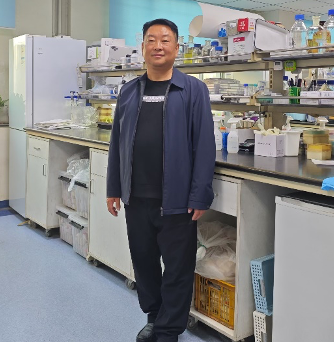
Chengzhi Jiao, PhD student, CAAS and Nanjing Agricultural U working on bioinformatics analysis, expert in the sequencing of the wheat tribe genomes and the interpretation of big data, as well as the development of algorithms related to molecular design breeding.
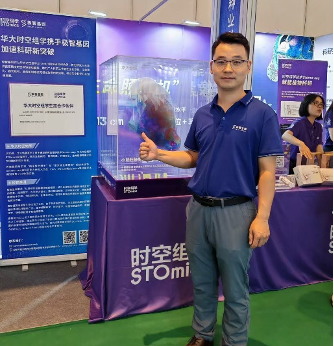
Xiaoming Xie, PhD student in CAU, working on bioinformatics analysis. Proficient in the interpretation of wheat multi-omics data and pan-gene study.

Li Zhao, PhD student, working on merging of genomics and cytogenetics, proficient in the chromosome painting.
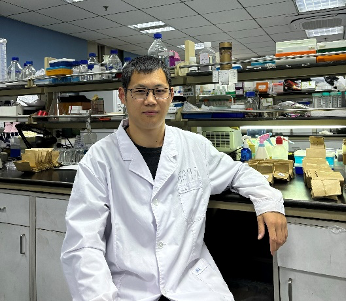
Dr. Yuxin Xie, Molecular Genetics, expert in molecular biology experiments, with excellent writing abilities.

Dr. Vanika Garg, Senior Research Fellow/Senior Lecturer, Bioinformatic Specialist, Murdoch University with expertise in genome analysis and computational biology.

Anu Chitikineni, Senior Science Manager, Murdoch University, Lead, Advanced Genomics Platform with expertise in large-scale genome sequencing and high-throughput genotyping.

Future research outlooks:
- Construct a map of the global wheat genome structural variations and association with breeding traits. This study, based on the third-generation long-read sequence genome assemblies, will provide a high-quality reference template for a comprehensive analysis of the rich structural variations found in wheat breeding varieties. In the future, using these high-quality assemblies as a reference panel, we will be able to create a full map of wheat structural variations at a broader population level, and explore the structural variation basis for the adaptability and diversity of wheat varieties. By associating this with phenotypic data, we aim to reveal the impact of structural variations on wheat phenotypes at the whole genome level.
- How to move from basic research to breeding. The high-quality genome assemblies constructed in this study are expected to lay the foundation for a comprehensive analysis of the genomic basis of wheat breeding evolution and also provide an accurate sequence reference for gene mining and molecular design breeding. The diversity and evolution rules of chromosome centromeres and telomeres in the wheat varieties revealed in the article will also bring new insights for more efficient breeding parental design and facilitate utilization of distant germplasm resources in future breeding.
For more details, please visit https://www.nature.com/articles/s41586-024-08277-0
Blog contributed by Xueyong Zhang, Weilong Guo, Chengzhi Jiao, Xiaoming Xie, Vanika Garg, Anu Chitikineni, Chenyang Hao, Liyang Chen, Rajeev K Varshney
Follow the Topic
-
Nature

A weekly international journal publishing the finest peer-reviewed research in all fields of science and technology on the basis of its originality, importance, interdisciplinary interest, timeliness, accessibility, elegance and surprising conclusions.


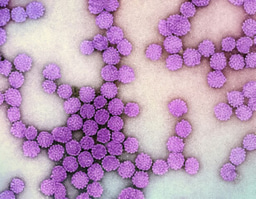

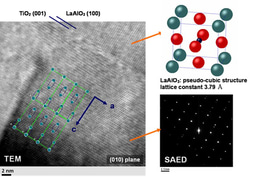

Please sign in or register for FREE
If you are a registered user on Research Communities by Springer Nature, please sign in